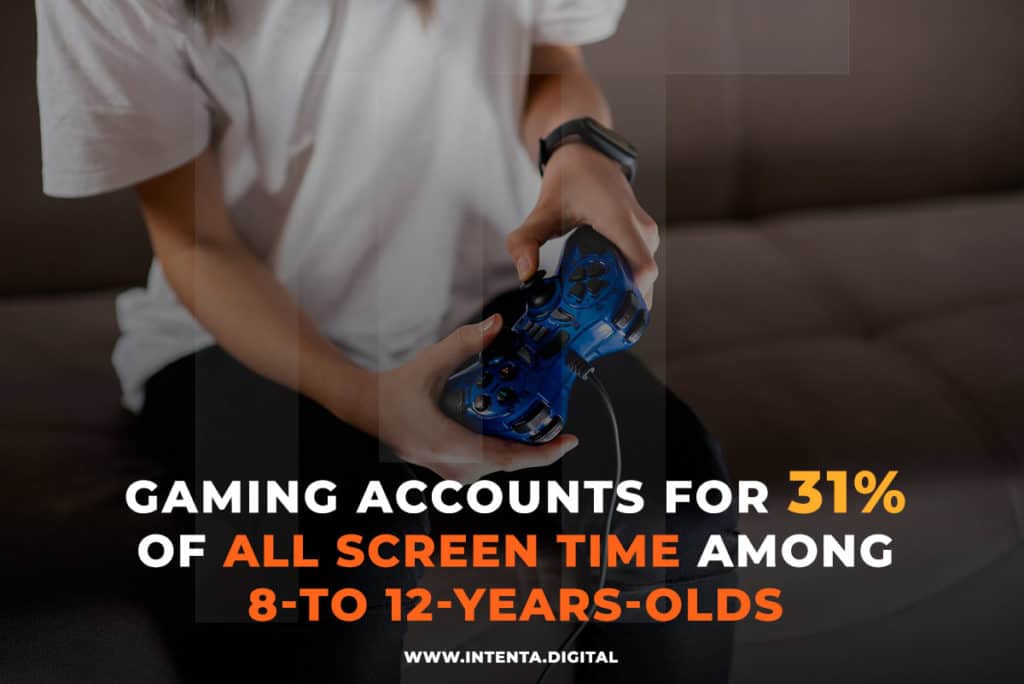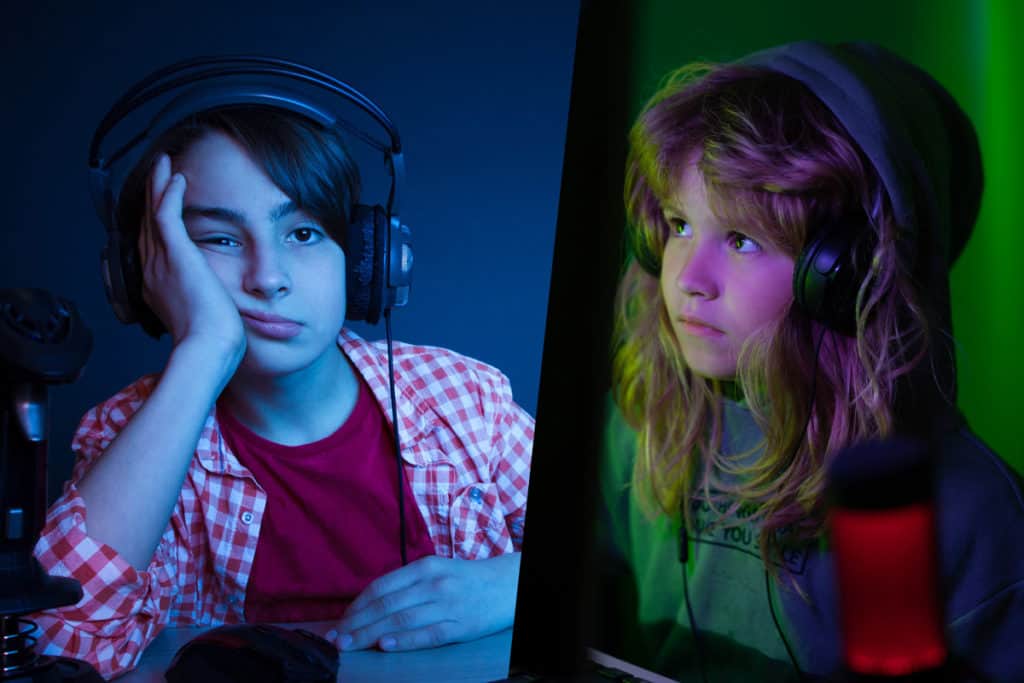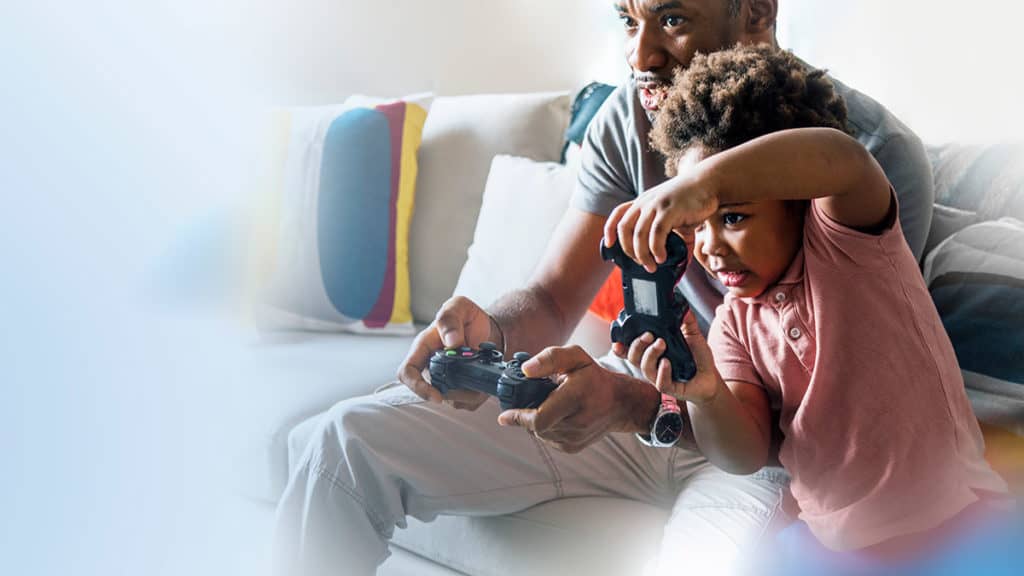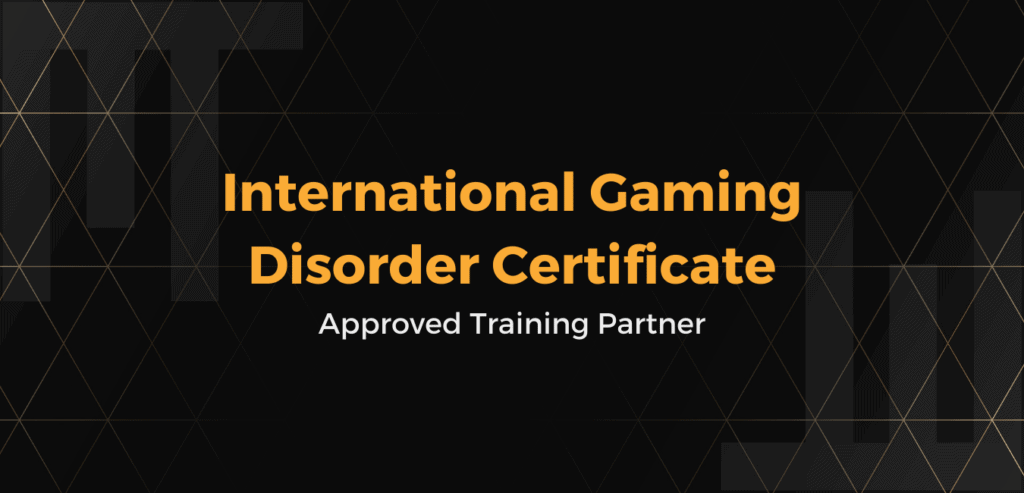How Gaming Disorder Impacts Children
The World Health Organization only included gaming disorder in the draft revision of its International Classification of Diseases (ICD-11) in 2017. Therefore, research into this emerging field is still ongoing and has tended to focus on adolescents and adults rather than children.
This blog highlights a recent study about problematic gaming in children. The research includes clinical treatment recommendations for the growing number of younger clients presenting with video game addiction.
Children gaming stats and screen time use

Due to advances in technology and internet connectivity, the number of adults and children playing video games worldwide is increasing each year. These insights illustrate the relationship that children have with screens and video games:
A 2019 report from Common Sense Media1 into media use by US tweens and teens found that:
- 8- to 12-year-olds in the US used screens recreationally for an average of 4.44 hours per day – excluding time spent online for schoolwork. This is more double the 2 hours of daily screen time use recommended as being a healthy amount for this age group.
- There was a significant difference in screen time based on socioeconomic status: 8- to 12-year-olds from high-income families spent 1 hour 50 minutes less online each day than the same aged children from low-income families.
- Gaming accounts for nearly a third (31%) of all screen time among 8- to 12-years-olds. Just under half (46%) of this age group play mobile games every day – in 2015 it was 27% – and about a quarter (24%) play console video games on a daily basis. On average, this age group spends around an hour and a half per day gaming.
A 2022 Australian study into internet gaming disorder in children2 recognized that:
- A growing number of children have levels of screen use that might be considered disordered.
- Around 3% of Australian children have gaming disorder and a larger proportion have problematic gaming symptoms.
How gaming disorder impacts children

For most children who play video games, gaming is a fun and healthy activity. However, a small percentage compulsively play video games at the expense of sleep, schoolwork, exercise, other hobbies and relationships with family and friends. They may also have co-existing issues such as anxiety, depression, social isolation and attention deficit hyperactivity disorder (ADHD).
As more families seek support for gaming-related problems, clinicians are asking ‘How common is gaming disorder in children?’. They also want to know how gaming disorder impacts children. These articles take a deeper dive into this rapidly-emerging area:
- Gaming disorder prevalence
- Health consequences of gaming disorder3.
Latest research on gaming disorder in children

A 2022 Australian study – ‘Internet Gaming Disorder (IGD) in Children: Clinical Treatment Insights’4 – looked at the profile, associated risk factors and impacts on development of gaming disorder in children aged 11-13 years old – the youngest cohort in gaming disorder research to date. It also evaluated a multi-modal parent/child treatment approach.
Case files from six children were analyzed for evidence of a range of factors including their daily amount of screen time, risk factors for developing gaming disorder, impact on development, symptoms relevant to gaming disorder, diagnostic criteria and treatment outcomes.
Risk factors for developing gaming disorder were notable, with both in-depth cases having at least four risk factors. The younger child (aged 11 years) displayed less impact on development than the 13-year-old child. The study found evidence that a multi-modal parent/child treatment approach contributed to positive outcomes and reduced negative impacts on development.
Recommendations for clinicians
The Australian study includes the following recommendations for clinicians treating the increasing number of children presenting with symptoms of problematic gaming or gaming disorder:
Earlier interventions are needed
Introduce early intervention strategies to target primary school children (8–12-year-olds) displaying signs of gaming disorder as opposed to waiting until they progress to high school, where chronic symptoms may require more intensive treatment.
INTENTA is committed to helping young gamers develop positive gaming habits and balanced mental health. Gaming needs a grassroots support framework to help the next generation of players develop positive gaming habits and balanced mental health. Module 5 of our Gaming Disorder Clinical Training outlines evidence-based effective interventions.
Comprehensive assessment
Rather than base a child’s gaming disorder assessment solely on their screen time use, the research suggests a comprehensive review is required to include;
risk factors, co-existing symptoms, functional impacts, which video games the child plays, plus any other background information. A comprehensive assessment is outlined in Module 4 of our Gaming Disorder Clinical Training.
Clinicians do not need to be gaming experts but they should have enough knowledge to understand whether video games are fulfilling an unmet need and exacerbating the child’s unhealthy gaming habits.
Case formulation and intervention
Establish a detailed case formulation that includes risk factors, and protective developmental impact that could reduce the risk factors. Module 6 of our Gaming Disorder Clinical Training provides guidance on how to apply the concepts and strategies you have learned to a case formulation.
Once a comprehensive formulation has been conducted, clinicians can target one or two risk factors or developmental impacts at a time. It may not be necessary to address every risk factor or developmental impact, but intervention should be enough to reduce problematic behavior and bring back balance.
The ‘domino effect’
The term ‘domino effect’ refers to the developmental impacts of gaming disorder compounding as the disorder progresses. Clinicians should use a case formulation that takes into account different areas of development – such as health, social, behavior and education – to assess which area(s) could be targeted first.
For example, if a child is falling behind at school as a result of regularly missing lessons and/or being late due to lack of sleep from gaming at night, the child’s family may feel overwhelmed trying to address all areas at once. The clinician may decide to tackle the sleep issue first on the basis that the other areas will improve as a result.
Global increase in problematic behavioral addiction in children

An increasing number of children and their families need help for problematic gaming. INTENTA is passionate about raising awareness around this rapidly-emerging field.
With our internationally-accredited training, professionals are equipped to help players and their families find a healthier relationship with gaming. Discover evidence-based strategies to break down barriers and connect with your clients. Help them regain control of their gaming habits and THRIVE.
Find out more about our online Gaming Disorder Clinical Training today.
Footnote:
- https://www.commonsensemedia.org/sites/default/files/research/report/2019-census-8-to-18-full-report-updated.pdf
- https://www.gavinpublishers.com/article/view/internet-gaming-disorder-igd-in-children-clinical-treatment-insights
- https://www.gavinpublishers.com/article/view/internet-gaming-disorder-igd-in-children-clinical-treatment-insights
- https://www.gavinpublishers.com/article/view/internet-gaming-disorder-igd-in-children-clinical-treatment-insights
Subscribe to Trends & Insights
Enter your email to receive monthly trends, insights and resources on gaming and digital disorders.
Subscribe to Trends & Insights
Enter your email to receive monthly trends, insights and resources on gaming, esports and mental health.

